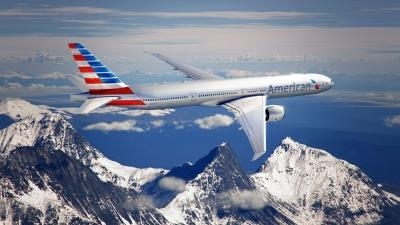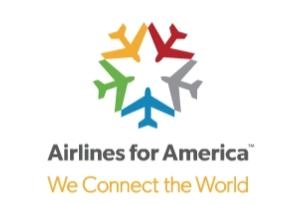Many Major Airlines Reporting Improving Financial Results
Airlines for America (A4A) on Wednesday delivered its Labor Day air travel forecast and first half 2014 results for U.S. passenger airlines, which reported improving profitability, enabling carriers to invest in their workforce, reduce debt and enhance the customer experience for airline passengers.

A4A projects a 2 percent year-over-year increase in the number of passengers flying on U.S. airlines during the seven-day Labor Day travel period. From Wednesday Aug. 27 through Tuesday, Sept. 2, A4A expects 14 million air travelers will take to the skies, up from an estimated 13.8 million in 2013, with the busiest day of the period occurring on Friday, Aug. 29. Airlines are adding seats to the marketplace to accommodate the expected increase in demand.
Nine U.S. passenger airlines – Alaska, Allegiant, American, Delta, Hawaiian, JetBlue, Southwest, Spirit and United – collectively reported a net profit of approximately $3.8 billion, up from $1.6 billion during the same period last year. This translated to a net margin of 5 percent, or 5 cents on every dollar of revenue, an improvement from the 2.1 percent margin reported in the first half of 2013.
The year-over-year improvement was driven by a 6 percent increase in operating revenues, which outpaced the 2.2 percent increase in operating expenses, including rising wages and benefits, airport landing fees, terminal rents and aircraft ownership costs. Despite remaining their largest and most volatile cost, fuel costs dipped 2.4 percent. Airlines also saw modest relief in maintenance expenses and aircraft rents.
“Airlines are key drivers of jobs and economic growth, and improving finances have further accelerated their investments in people, products and technology to enhance the travel experience for customers,” said John Heimlich, A4A Vice President and Chief Economist. “With U.S. personal incomes continuing to outpace airfares, air travel is far more accessible to customers than it was in the past.”
While airfare remains affordable, airlines and their customers continue to pay more than their fair share in federally imposed taxes. From 2000 to 2013, adjusted for inflation, base fares dropped 8 percent while taxes rose 49 percent. Four decades ago, taxes and fees accounted for less than one-tenth of the price of an airline ticket. Today, the amount has skyrocketed to 21 percent of the price or $62 on a typical $300 roundtrip domestic ticket. That amount further increased in July to $63 when the passenger tax more than doubled to $5.60 on a one-way trip. It could go even higher if other taxes proposed by the White House become law.

In the first half of 2014, these nine airlines invested $7 billion – more than $1 billion per month – to benefit customers. New and refurbished aircraft are being delivered at a rate of nearly one per day, including 149 received in the first six months and 168 additional units slated for delivery in the remainder of the year. Additional investments include route expansion, development of mobile technology, enhanced airport check-in areas, lounges and gates. Additionally, airlines were able to further reduce gross debt by $1.8 billion.
U.S. airlines overcame numerous extreme weather events, such as the polar vortex and severe thunderstorms, to post a completion factor of 96.9 percent and an on-time arrival rate of 74.2 percent. According to the Department of Transportation, 99.6 percent of passengers had their bags properly handled and complaints remained low at 1.49 per 100,000 passengers.
“Customers continue to benefit from the proactive approach airlines are taking to cope with extreme weather and minimize travel disruptions,” said Heimlich. “Despite some of the worst winter weather conditions in recent memory, airlines continued to meet the needs of their customers, while connecting communities and economies and creating jobs.”
 ANN's Daily Aero-Term (05.07.25): Terminal Radar Service Area
ANN's Daily Aero-Term (05.07.25): Terminal Radar Service Area ANN's Daily Aero-Linx (05.07.25)
ANN's Daily Aero-Linx (05.07.25) Classic Aero-TV: Anousheh Ansari -- The Woman Behind The Prize
Classic Aero-TV: Anousheh Ansari -- The Woman Behind The Prize NTSB Prelim: Bell 206B
NTSB Prelim: Bell 206B Airborne-NextGen 05.06.25: AF Uncrewed Fighters, Drones v Planes, Joby Crew Test
Airborne-NextGen 05.06.25: AF Uncrewed Fighters, Drones v Planes, Joby Crew Test




